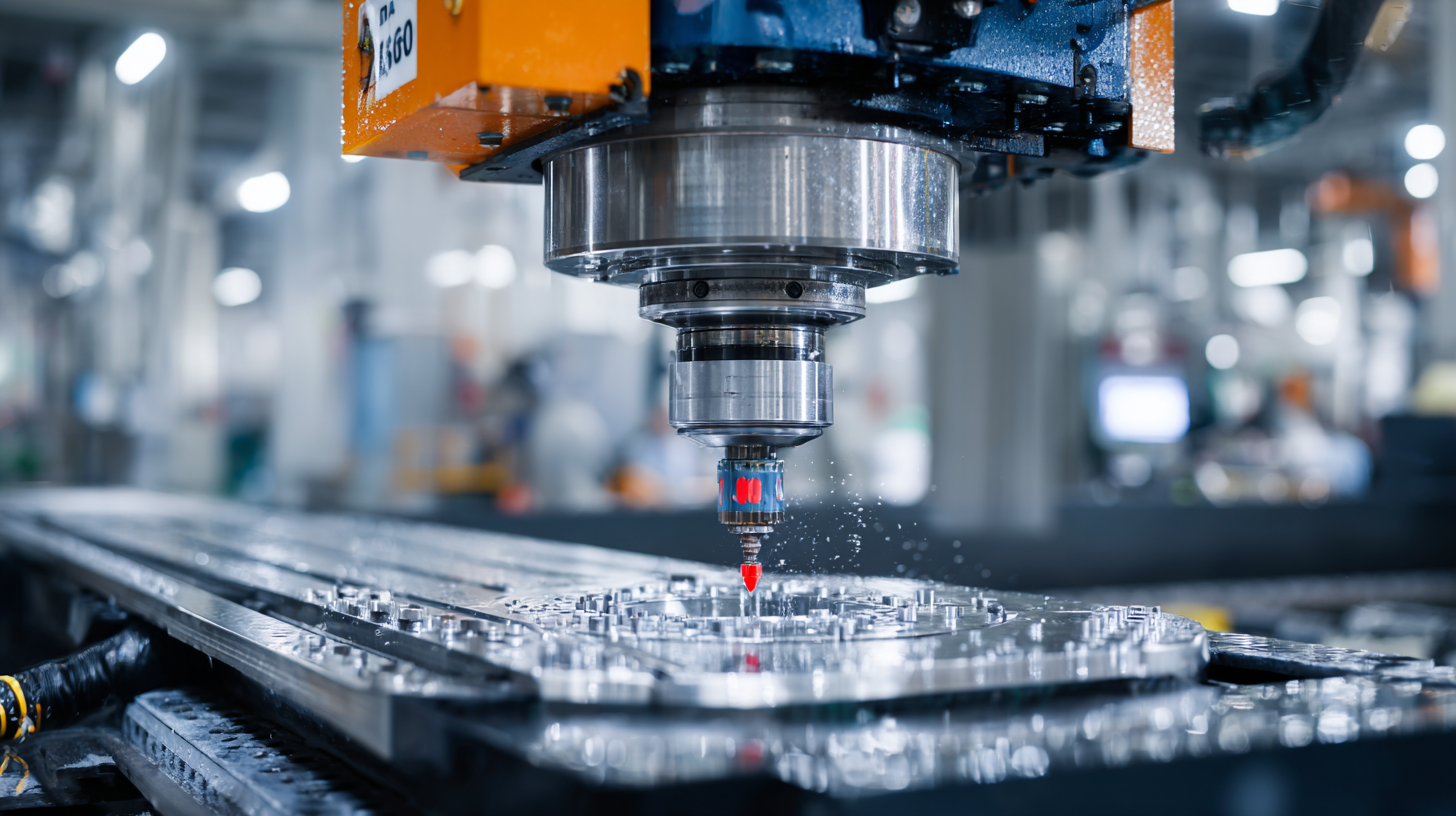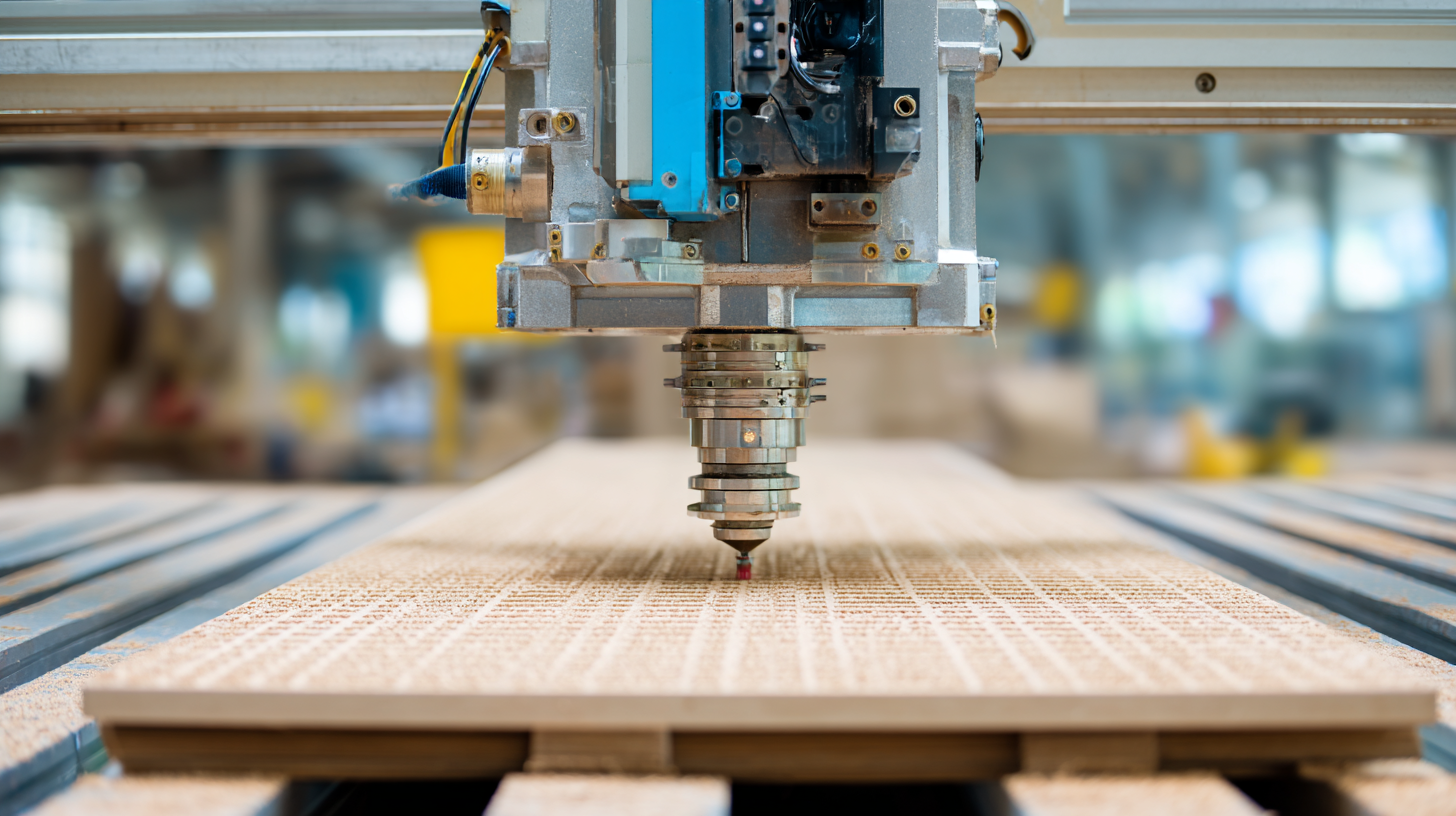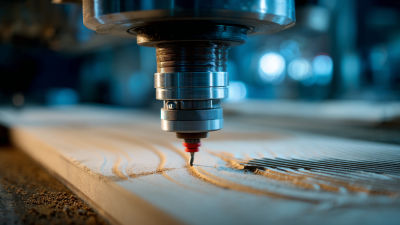In the rapidly evolving landscape of manufacturing, the introduction of advanced technologies continuously reshapes operational efficiencies and product quality. Among these innovations, the "Heavy Duty CNC Router" stands out as a transformative tool that significantly enhances precision and productivity across various industries. With the growing demand for customization and complex designs, businesses are increasingly turning to these robust machines to meet their specific manufacturing needs.
Heavy duty CNC routers are engineered to handle intricate tasks with outstanding accuracy, allowing manufacturers to create detailed components while reducing lead times and material waste. As we delve into 2023, understanding the impact of these powerful machines on manufacturing efficiency becomes essential for industry leaders looking to maintain a competitive edge. In this exploration, we will uncover practical tips and strategies for leveraging heavy duty CNC routers effectively, ensuring that businesses not only keep pace with technological advancements but also maximize their operational potential.

In 2023, heavy duty CNC routers are emerging as a transformative force in modern manufacturing, significantly enhancing efficiency across various sectors. According to a recent report by Research and Markets, the CNC machine market is projected to reach $100 billion by 2025, with heavy duty routers playing a crucial role in this growth. These advanced machines not only offer greater precision and versatility but also enable manufacturers to optimize their production processes by reducing waste and minimizing downtime.

The advantages of embracing heavy duty CNC routers extend beyond mere operational efficiency. For instance, a study by Deloitte highlights that companies utilizing CNC technology have reported a 30% increase in production speed and a 25% reduction in labor costs. This shift allows manufacturers to respond quickly to market demands while maintaining high standards of quality. As industries continue to adapt to technological advancements, integrating heavy duty CNC routers will be a game changer, paving the way for smart manufacturing solutions that drive sustainable growth and innovation.
Heavy duty CNC routers are revolutionizing manufacturing efficiency in 2023, primarily through their precision and productivity-enhancing features. One of the standout characteristics of these machines is their robust build quality, which allows for the processing of a wide variety of materials, including metals, plastics, and composites. According to a recent report by ResearchAndMarkets, the CNC router market is expected to reach $2.03 billion by 2025, reflecting a CAGR of 5.2%. This growth underscores the industry's recognition of the value that heavy duty CNC routers bring in terms of operational efficiency and precision.
Additionally, advanced automation technologies and software integration have become essential features of modern CNC routers. For instance, the incorporation of intelligent tooling and real-time monitoring systems ensures that production remains consistent and error-free. A survey by the Association for Manufacturing Technology revealed that companies utilizing CNC technology reported a 20% increase in production efficiency and a significant reduction in waste. These statistics emphasize how heavy duty CNC routers not only enhance productivity but also contribute to a more sustainable manufacturing process, making them vital assets in today's competitive landscape.
In 2023, heavy-duty CNC routers are revolutionizing several key industries by enhancing manufacturing
efficiency and precision. Industries such as aerospace, automotive,
and furniture design have experienced significant upgrades in their production processes.
These CNC routers allow for the creation of intricate designs and high-tolerance parts at accelerated speeds, which helps reduce lead
times and costs. The automation provided by these machines minimizes human error, resulting in a more reliable production output.
Furthermore, the versatility of heavy-duty CNC routers means they can handle a variety of materials, from metals to composites
to wood, making them indispensable in diverse manufacturing environments. For example, in the aerospace sector,
where precision is paramount, the ability to produce lightweight components that meet stringent specifications is crucial.
Similarly, in furniture manufacturing, these machines can create bespoke pieces with complex patterns that would have been difficult
to achieve manually. As industries continue to embrace digital manufacturing technologies, the benefits of heavy-duty CNC routing
are set to drive further innovations and efficiency improvements throughout 2023.
The implementation of heavy-duty CNC routers in manufacturing is set to revolutionize operational output in 2023. These advanced machines offer unparalleled precision and efficiency, making them a pivotal asset for industries aiming to optimize production processes. According to industry reports, integrating heavy-duty CNC routers can reduce manufacturing lead times by up to 40%, enhancing overall productivity. Their ability to execute complex designs with high accuracy not only minimizes waste but also improves product quality, a crucial factor in competitive markets.
To maximize the benefits of heavy-duty CNC routers, manufacturers should focus on strategic implementation. Investing in training for operators can significantly enhance the utilization of these machines, ensuring that their potential is fully realized. Moreover, maintaining a robust maintenance schedule is essential, as it prolongs machine lifespan and performance. Data suggests that companies that actively engage in preventive maintenance see a 25% increase in operational efficiency. By following these tips and embracing heavy-duty CNC technology, manufacturers can unlock new levels of precision and efficiency, positioning themselves as leaders in their respective industries.

The future of CNC router technology is poised for significant transformation as manufacturers increasingly turn to heavy-duty CNC routers to enhance their efficiency and precision in production processes. By 2025, the woodworking machinery market is expected to expand from $5.23 billion to an impressive $7.88 billion by 2032, reflecting a compound annual growth rate (CAGR) of 6.0%. This surge is indicative of a broader trend towards automation and high-precision machining in manufacturing, driven by the continuous advancement of CNC technology.
In parallel, the computer numerical control (CNC) machines market is forecasted to grow from $74.9 billion in 2024 to approximately $160.0 billion by 2032, with a notable CAGR of 10.1%. This growth is fueled by increasing demands for multi-axis machining centers and high-precision tooling that are essential for modern manufacturing applications. As industry players invest in cutting-edge innovations, including AI-driven processes and sustainable practices, the impact on manufacturing efficiency will be profound, enabling a future where precision engineering and environmental responsibility go hand in hand.





